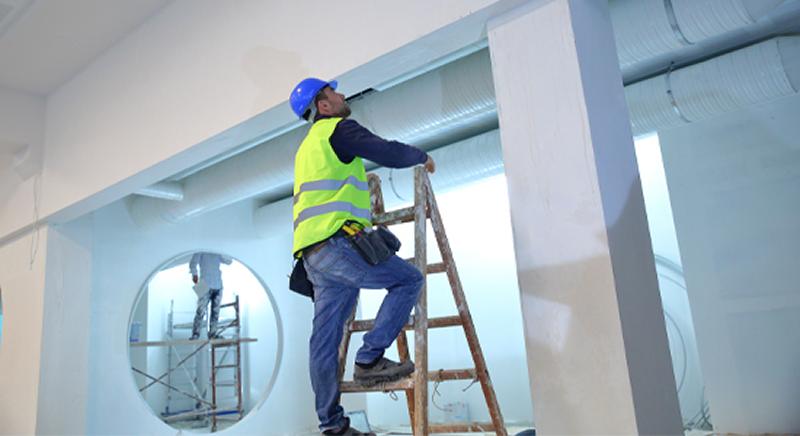
Are you taking precautions when working at height?
The Height Regulations (WAHR) 2005 place many duties on employers and employees with regard to work completed at height. The regulations define work at height as:
- work above ground/floor level
- risk of fall from an edge, through an opening or fragile surface or
- risk of fall from ground level into an opening in a floor or a hole in the ground
Falls from height remain one of the biggest causes of workplace fatalities with 37 in 2015/16 and an annual average over the period 2012/13-2016/17 of 40.
It is essential that you do everything reasonably practicable to prevent a fall from height occurring, there are many ways you can do this but as with everything the work should start with a risk assessment before anything is done – this will allow you to control the risks properly. It’s important to think worst case scenario – what could happen? This could be inclement weather unexpectedly arriving, faulty equipment, a vehicle striking a platform you are working from – the list goes on.
When planning a work from height job you must first think – “do I really need to do this at height?” – if there is another way (i.e. a light fitting being removed and brought to ground level for it to be repaired rather than done at height? Could windows be cleaned with a telescopic pole from the ground rather than being done at height?)
If work at height really can’t be avoided we must ensure that the right equipment is selected in the first instance - A ladder should not automatically be the go to method of working from height – schedule 6 of the WAHR says
“Every employer shall ensure that a ladder is used for work at height only if a risk assessment under regulation 3 of the Management Regulations has demonstrated that the use of more suitable work equipment is not justified because of the low risk and short duration or existing features that cannot be altered”
Generally, a ladder should be seen as a means of accessing an area to work from height, like a working platform or tower, not as an actual place to work from height. You should make sure that people with sufficient skills, knowledge and experience are employed to perform the task, or, if they are being trained, that they work under the supervision of somebody competent to do it.
You must control the risks, with collective protection measures like barriers / edge protection given priority, and then restraints / harnesses and fall arrest equipment as required following the risk assessment.
Regulation 8(c) of the WAHR also requires that sufficient people are trained to rescue a person if they get in to difficulty whilst working at height, you must have a plan in place for each work at height occasion.
Roofer sentenced after breaching health and safety laws
A Manchester-based roofer was recently sentenced after breaching health and safety laws.
The defendant failed to implement any form of edge protection or scaffolding whilst roofing work was carried out and did not have employers’ liability compulsory insurance.
The defendant had also been served with two prohibition notices on two separate occasions with regards to working from a height with no suitable edge protection. Despite this, he continued to work without appropriate scaffolding and, in doing so, put himself and his employee at risk of a fall from height, as well as members of the public who were at risk from any falling materials.
He pleaded guilty to breaching Regulation 6 (3) of the Work at Height Regulations 2005, Regulation 10 (1) of the Work at Height Regulations 2005 and Section 1 (1) of the Employers’ Liability (Compulsory Insurance) Act 1969. He was sentenced to six months imprisonment suspended for two years, 240 hours community service and ordered to pay costs of £4,600.
Training courses to support you
Let Quest help you understand your responsibilities – they can offer health and safety training courses to support you and your business and upskill your employees which would reduce the likelihood of an incident, and fulfil requirements under section 2.2 (c) of The Health and Safety at Work etc Act 1974 to “provide such information, instruction, training and supervision as is necessary to ensure, so far as is reasonably practicable, the health and safety at work of his employees”
They can audit your processes and work with you to develop effective procedures for controlling work. Quest can also offer awareness courses to better equip your employees for this kind of work and also to contribute towards your responsibility under Section 2 (c) of The Health & Safety at Work Etc Act 1974 which requires that employers provide information, instruction, training and supervision as is necessary to ensure, so far as is reasonably practicable, the health and safety at work of his employees.
Don’t fall foul of the law - contact Quest so they can start working with you.
Quest is a BALI HR&HS membership benefit and supports our members with vital technical industry information.

